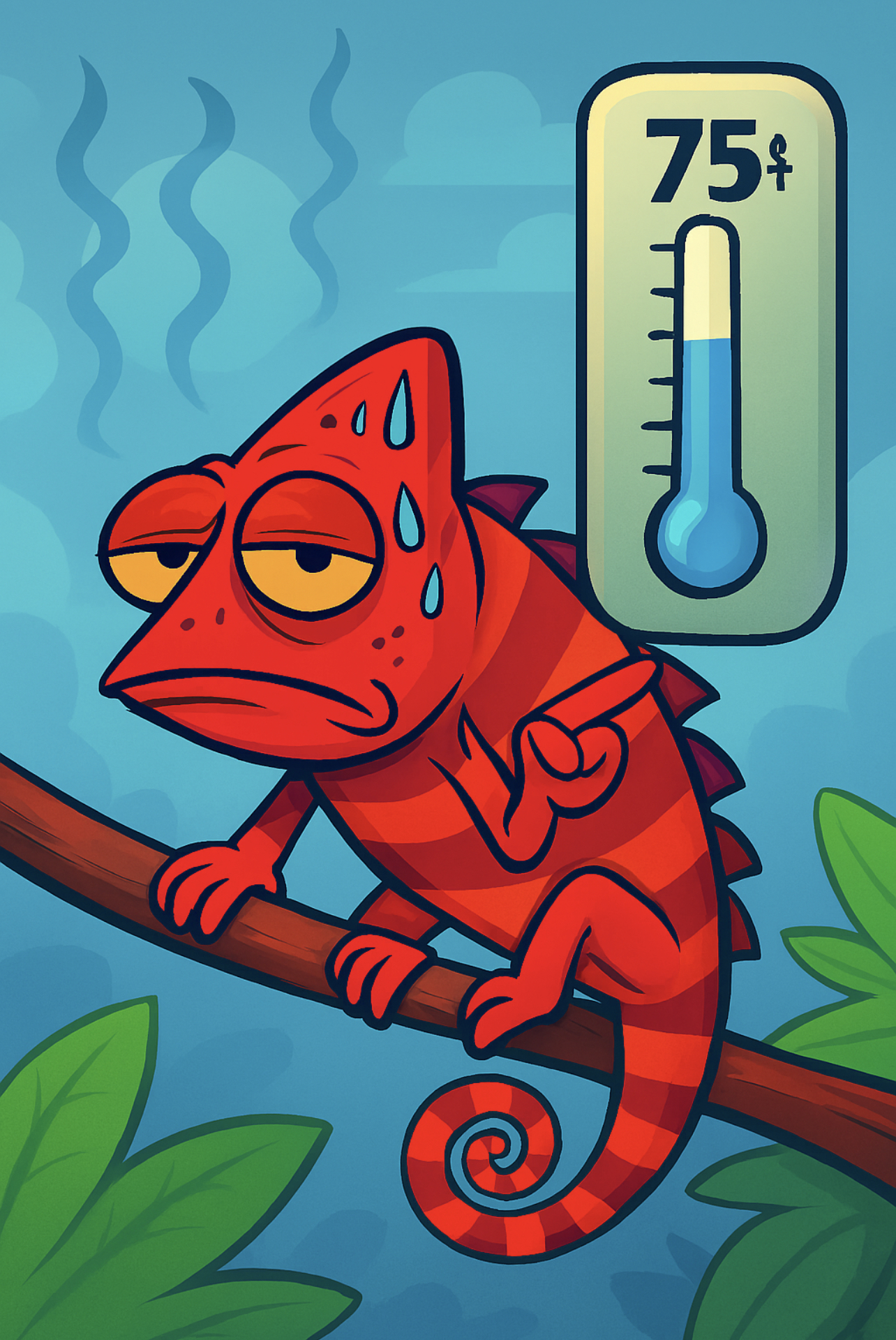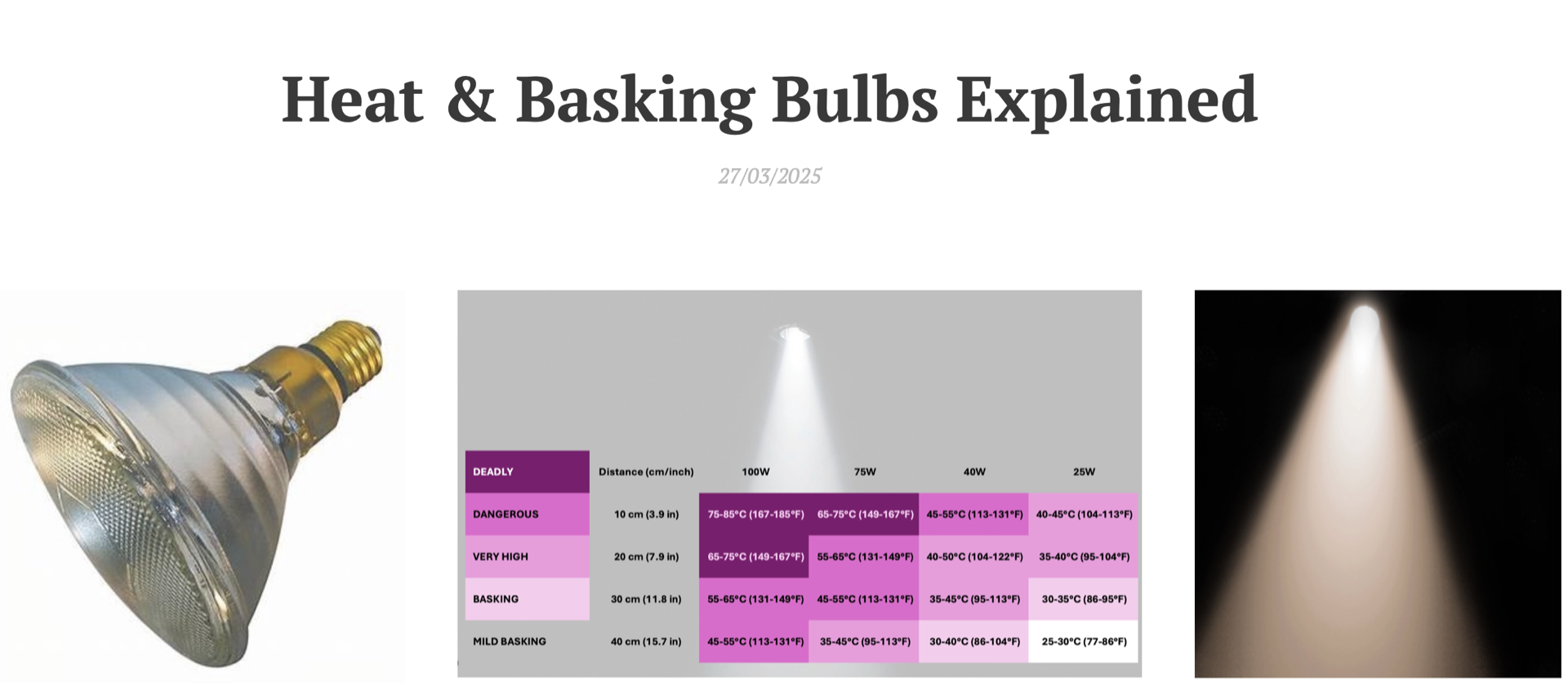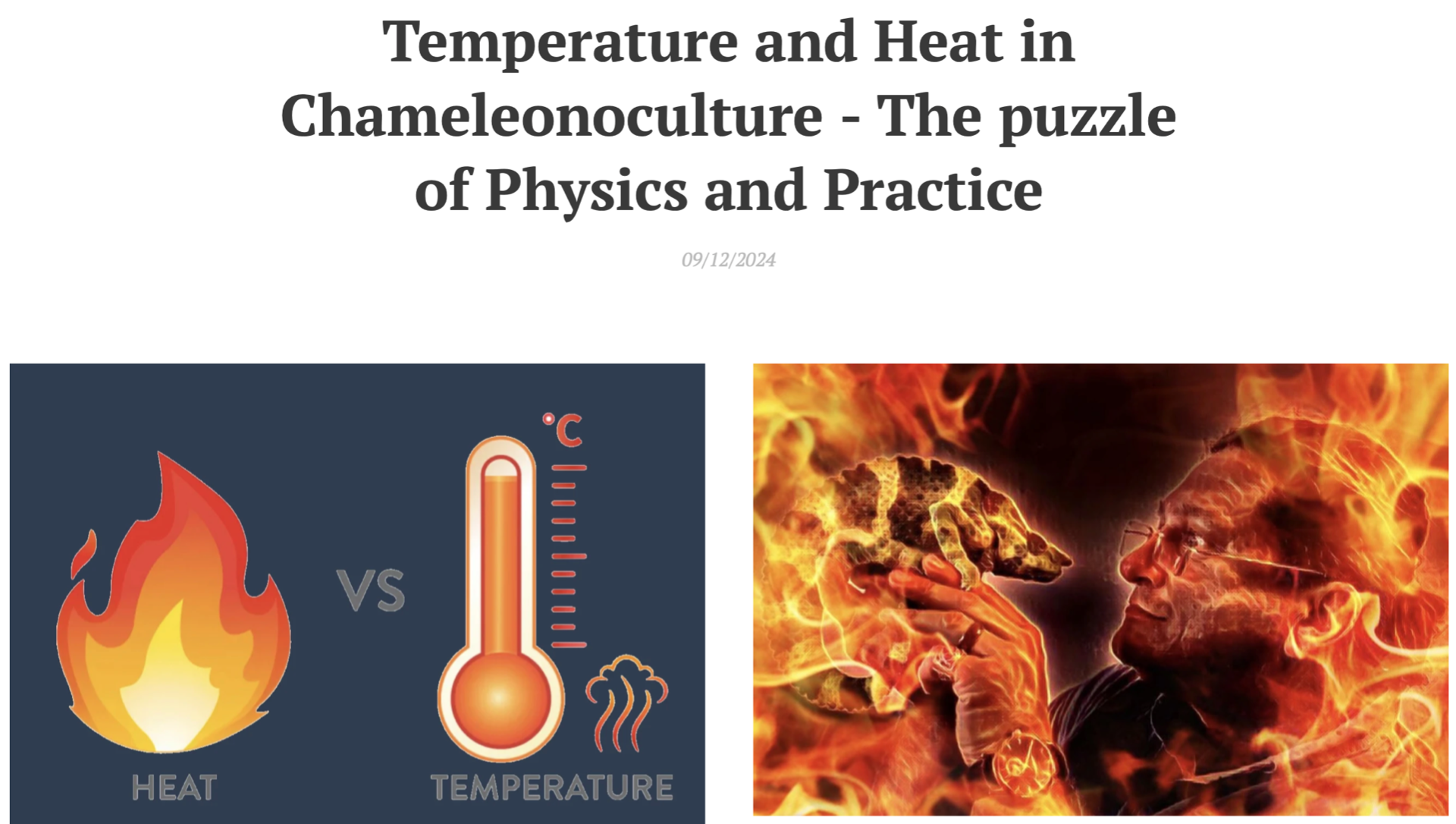Myth 39: “The Temperature I Measure With Temp-Gun at the Basking Branch Is the Basking Temperature”
Measuring the basking branch with a temp gun does not reflect the true basking temperature your chameleon experiences. Misinterpreting this leads to overheating, dehydration, and accelerated aging.
Misreading the Basking Temperature

Using a temperature gun to measure the basking branch is common practice—but it's a critical misunderstanding of what's actually being measured. The branch is a thermally inert material, often wood, which absorbs heat differently than a chameleon's body. Chameleons are 85% water, meaning they absorb infrared (IR) radiation far more efficiently than wood does.
So while your temp gun might read 80–85F on the branch, your chameleon's body—sitting 2–4 inches closer to the bulb—could be absorbing heat at levels closer to 100F. That's dangerously high.
The Consequences of Overheating
This miscalculation leads to:
Overheated metabolism — speeding up digestion and energy use
Desiccation — loss of body moisture
Accelerated aging — living faster, dying younger
Thermal stress — discomfort, confusion, and health decline
Chameleons bask to regulate their temperature, not to roast. In the wild, they bask briefly in the morning or late afternoon—not under intense midday heat. In captivity, strong bulbs placed too close mimic midday sun at full blast, which is unnatural and harmful.
UV Misuse: Another Layer of Damage
Using 12% UVB bulbs for panther chameleons is unnecessary and excessive. This level of UV exposure contributes to the "overbaked" look—dull coloration, dry skin, and stress. Instead:
Use 6% UVB source
Or place the 12% source 1–2 inches higher
Ensure proper distance and shielding to avoid direct exposure
Measure the UVI with UV Meter
This adjustment supports healthy vitamin D synthesis without overwhelming the animal.
Measurement Misconceptions
Laser thermometers measure surface temperature, not air temperature. They detect infrared radiation from solid objects—not gases. Measuring the air or small surfaces like branches yields inaccurate readings. For reliable data:
Use a ceramic or metal object to absorb heat and reflect true intensity
Measure the temperature at the level of the chameleon's body, not just the perch
Interpretation Matters
Measuring is encouraged—but understanding what you measure is essential. Without context, numbers can mislead. A well-intentioned keeper might think they're providing optimal conditions, but in reality, they're creating a slow-cooking chamber.
What You Should Do
Lower basking bulb wattage
Increase distance between bulb and basking spot
Reduce basking time to several minutes several time a day onlu
Use UVB bulbs appropriate to species and age
Measure temperature at body level, not branch level
Provide shaded areas and thermal gradients
Monitor behavior for signs of overheating
Source & Further Reading
For a detailed breakdown of heat physics, UV exposure, and proper basking setup, read the full article:
Heat & Basking Bulbs Explained – Chameleons.info
Temperature and Heat in Chameleonoculture - The puzzle of Physics and Practice

